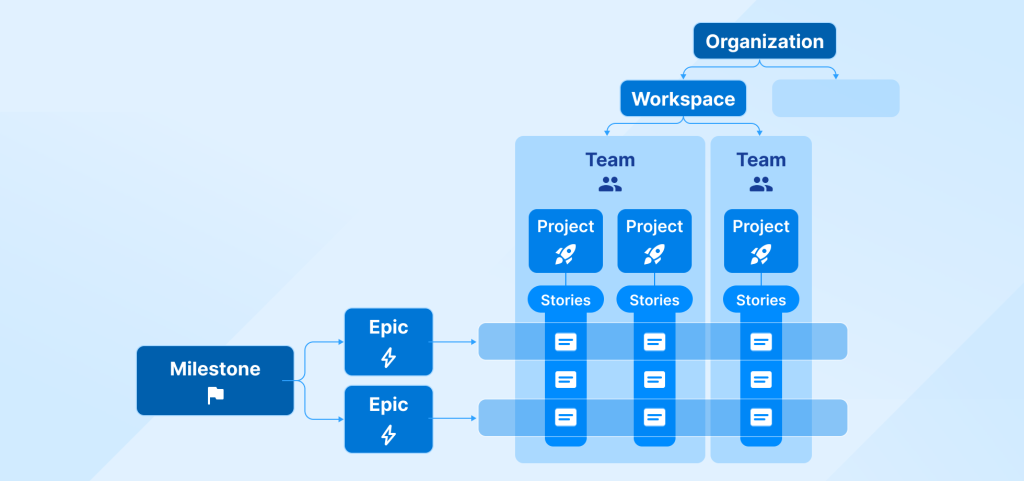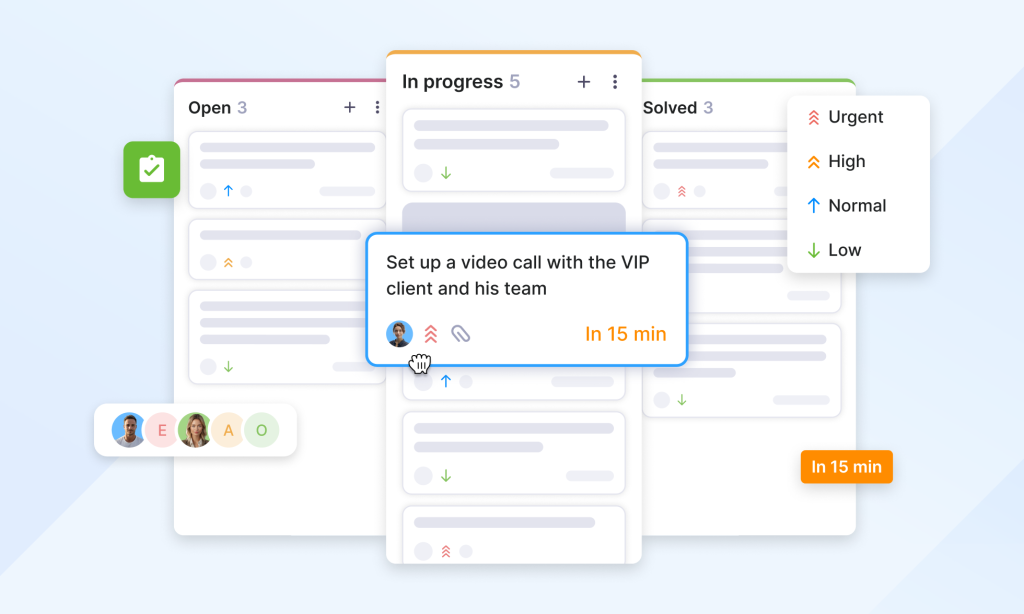
Seamless collaboration in the workplace is a game-changer for organizations looking to grow. Whether you’re a high-level executive or an intern, failure to work well within a team can result in project setbacks.
That’s why today’s leaders are committed to building a culture of collaboration. Easier said than done, especially if you’re part of an international team! 😊
In this blog post, we’ll explore the benefits of good workplace collaboration and provide some practical tips for fostering a collaborative culture based on our experience growing a remote-first team (with almost 100 people working on different projects).
Why is collaboration important?
In any workplace, teamwork and creative problem-solving skills are essential for success. Employees working together on a project can pool their skills and knowledge to build better products. This leads to better results and helps employees grow professionally and personally.
The numbers speak for themselves. According to research conducted by Zippia, more than 50% of workers in the United States say their jobs are reliant on collaboration.
Working together makes people feel more interested and involved in their jobs. They also tend to be happier and work harder. Collaborating creates a feeling of togetherness and teamwork, which makes employees feel better about their work.
Benefits of collaboration in the workplace
Collaboration in the workplace has various positive effects on both the organization and its employees. Here, we will discuss some of the significant benefits of team and agency collaboration.
1. Work efficiency
Efficient work practices can improve collaboration by streamlining processes, reducing errors, and increasing productivity.
Here are three actionable tips for creating a collaborative company culture.
- Create a culture of collaboration: Encourage teamwork and provide opportunities for employees to work together and speak their minds. This could include team-building activities, collaborative projects, and asking for input from all members on major decisions.
- Leverage online communication tools: There are many tools available that can help employees collaborate remotely, share information, and work together. These could include video conferencing and communication apps. We use Slack in everyday communications (dedicated channels for our projects and public channels where we chat, share interesting news, or pet photos).
- Recognize and reward efforts: Acknowledge and celebrate people who work well together and achieve great results. This can help to reinforce the importance of teamwork in the workplace.
2. Workplace engagement
At the heart of any successful company is a passionate and engaged workforce. Encouraging collaboration in the workplace is one of the best ways to foster this kind of engagement.
When employees work, and communication is transparent, everyone understands the bigger picture and their role. This helps everyone feel like they truly belong to the team.
Engaged employees support each other, challenge each other, and ultimately help each other grow.
3. Learning and innovation
Employees who work together create team synergy, meaning they can achieve more as a group than they would alone. This synergy can lead to increased creativity, problem-solving, and innovation.
Furthermore, collaboration makes employee onboarding easier and more organic. For example, senior employees can share their knowledge and experience with new hires, helping them to learn and grow faster.
Collaboration creates a culture of continuous learning and growth where everyone can benefit from the expertise of others.
Collaboration strategies to elevate performance
These are some of the things we keep in mind when fostering collaboration at Textmagic.
1. Set clear goals and expectations
Without a clear goal, it’s easy for team members to become distracted and lose sight of what they’re working toward. Ensure that everyone knows what the result should look like and their specific role in achieving it. This will help keep everyone focused and working toward the same outcome.
The idea of launching a totally new customer engagement platform initially intimidated us. However, our team broke down the tasks to get everyone aligned. In other words, we split huge goals into smaller initiatives.

2. Create a culture of open communication
Encourage your team to share their ideas, thoughts, and concerns freely. This will help build trust and foster an environment where everyone feels valued and heard. Don’t be afraid to give and receive feedback, either.
Constructive criticism can be a powerful tool to improve teamwork and collaboration and ensure everyone is on the same page.
3. Recognize performance
When your team achieves a goal, acknowledge their hard work and effort. You can do this by sending a congratulatory email, giving a shoutout in a meeting, on slack, or even treating the team to a small celebration. This helps foster a positive work environment and motivates everyone to work together toward success.

Positive feedback can also help boost team morale and create a more collaborative work environment. By showing your team members that you value their contributions and care about their success, you can motivate them to keep up the good work.
4. Be inclusive
Creating an inclusive environment can foster a sense of belonging and unity among team members, leading to better workplace collaboration. You can do this by actively listening to everyone’s thoughts and opinions, encouraging open communication, and respecting diversity.
Starting a new job can be intimidating, so it’s essential to make new team members feel welcome and valued. This can be done by assigning them a mentor to introduce them to the rest of the team and give them opportunities to contribute and learn.
Support and inclusivity can cultivate empathy in the workplace and encourage collaborative relationships.
5. Provide resources to help your team grow
Providing the necessary tools, technology, and resources is crucial to fostering effective workplace collaboration. This involves offering appropriate training and support to enable each team member to contribute effectively based on their skills and knowledge.
Providing customer support is as essential as providing employee support. Open lines of communication and schedule check-ins or 1-on-1s to identify and address any resource gaps.
Whether providing additional resources or making changes to processes, taking the time to understand and address concerns shows your employees that their contributions are valued. This can also help to build trust and improve overall team morale.
6. Use team collaboration systems
One of the most significant benefits of team collaboration systems is that they eliminate the need for endless email threads or attachments that can get lost or become outdated. With Textmagic, all team members can access and share the same up-to-date documents in real time.

Another benefit of task collaboration tools is the reduced need for meetings, which can be time-consuming and inefficient.
Must-have collaboration skills in the workplace
- Good communication skills. Group communication is critical for decision-making, conflict resolution, and productive teamwork. But for some, sharing ideas in a group can be intimidating. Even those great communicators can struggle to express themselves in a group. To overcome this, team leaders should create a safe space that welcomes all communication styles.
- Ability to adapt quickly. When faced with conflicting views or ideas, the ability to compromise and find a happy medium is crucial for the team’s success. It’s not just about being right or having your way but about prioritizing the company’s needs and goals above your own. Adaptability is the key to success in any collaborative setting.
Collaboration blockers
- Micromanaging: When a manager excessively controls the work process, it can stifle creativity and discourage contributions. This can lead to a lack of trust and respect among team members who feel undervalued and disempowered.
☝ Creating a collaborative culture can help overcome the challenges of micromanagement and enhance team members’ sense of purpose and engagement. Assign tasks based on individual strengths and skills, and encourage open communication.
- Punishing: Punishing employees for making mistakes or not meeting expectations can block a collaborative environment. This can lead to a lack of innovation and creativity.
🌱 Instead of punishing team members, create a culture of learning and growth where mistakes are seen as opportunities for improvement.
- Poor project management: When a project is poorly managed, it can cause team members to feel confused, frustrated, and directionless.
🗣️ The project manager must communicate effectively with the team, ensuring that everyone understands their roles, responsibilities, and deadlines. This helps to keep everyone on track and working together toward a common goal.
Two companies with collaborative workplaces
We’ve identified two more examples of organizations with thriving collaborative workplaces.
1. Marvel empowers super-talented teams
From the beginning, to create its legendary comic books, Marvel believed in the collaboration of super-talented teams. Therefore, every project was divided into smaller steps, and everyone had a chance to participate in the development process.
Writers like Stan Lee himself would come up with the main idea for the story, illustrators would fill the pages with dramatic sequential drawings, and colorists would then add the primary colors, but these last two could also make suggestions for the HQ’s content.
From this example, we can visualize that Marvel built a work chain that was carefully planned and developed to enable all contributors to collectively cooperate with every product. Not only that, but the collaboration among writers and artists as they developed characters and storylines enhanced creativity and, consequently, the quality of each project.
2. Basecamp overcame budget constraints from within
Basecamp knows that good collaboration is crucial for success, especially in marketing. They faced a challenge last year when they hired a high-profile ad agency for their branding campaign, only to realize that the agency was out of sync with Basecamp’s budget.
However, instead of giving up, they chose to do it themselves by hiring a new head of marketing and creating their campaign.
Glenn, the head of marketing, and Chad, the visual storyteller, collaborated to develop a new concept for the brand’s commercial. This example highlights the importance of teamwork, where team members with different skill sets and perspectives collaborate to achieve common goals.
By leveraging each other’s strengths and expertise, Glenn and Chad overcame a significant obstacle in creating a high-quality commercial with a limited budget. This demonstrates how effective collaboration can lead to innovative solutions and successful outcomes.
The result was a visually stunning commercial that effectively showcased Basecamp’s project management tool and generated significant buzz in the marketing industry.
Improve collaboration in the workplace
How we work has changed. Collaboration has gone from a nice-to-have to a must-have. That said, achieving effective work collaboration takes the time, effort, and commitment of everyone involved.
By implementing the outlined strategies, you can build a culture of collaboration that maximizes the benefits of teamwork and drives better outcomes for your organization. Prioritizing a sense of community leads to a more productive work environment and increases employee engagement.
Frequently Asked Questions (FAQs)
Collaboration in the workplace means employees working together to achieve shared goals by combining their skills, ideas, and efforts in an organized and respectful way.
You can show collaboration by actively listening, sharing knowledge, offering support, and contributing to group decisions or projects in a solution-focused manner.
Communication, adaptability, and problem-solving are three core collaboration skills. These help teams coordinate effectively, navigate challenges, and reach common goals with ease.
A cross-functional team that combines marketing, development, and customer service working together to launch a product is a strong example of workplace collaboration.
Teamwork is about working as a unit toward a goal, often with defined roles. Collaboration focuses more on shared ideas, equal input, and co-creation across roles or departments.
Related articles
Top 20+ best collaboration tools for businesses
With the popularity of remote and distributed teams ...
How we crafted our SaaS positioning statement & 10 examples for inspiration
There are numerous positioning statement examples ou...
13 Black Friday marketing ideas to boost sales using SMS
Black Friday is one of the biggest shopping holidays...
How to craft a customer acquisition strategy that drives results
Acquiring new customers can be challenging for busin...
HTML Email best practices: How to optimize email campaigns in 2025
HTML emails are still one of the most effective ways...




